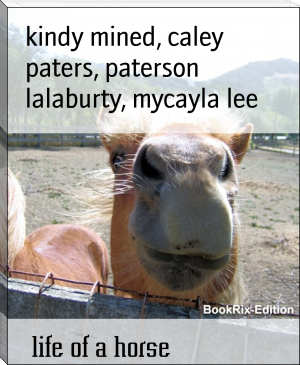Learn about Bobcats - Cheyenne R. W. (best thriller novels of all time .TXT) 📗

- Author: Cheyenne R. W.
Book online «Learn about Bobcats - Cheyenne R. W. (best thriller novels of all time .TXT) 📗». Author Cheyenne R. W.
Bobcats
By C.R.W.
The bobcat is an expert at hunting and camouflage. It reproduces every other year. This cat is a master at surviving and adapting to any situation. The conservation of the bobcat is not threatening, but they are still hunted. The bobcat has some unique features that tell it apart from other cats, including its bobbed tail, which it got its name from. The bobcat looks like many other species, which the bobcat is related to.
Bobcats reproduce during November through January, every other year. In one litter, there can be one to six kittens, usually three. A bobcat’s gestation period, or the length of time the mother carries the baby(s) is about 60 – 63 days. The life cycle of a wild bobcat goes like this. After they are born, baby bobcats don’t open their eyes until they’re nine to ten days old. They nurse until about three months old, and then learn how to eat meat and how to kill. When old enough, the young bobcats leave the den and never return. From their mother they find out how to hunt, and leave her when they are nine months old. Once a year old, bobcats begin their own families. Bobcats live about thirty years in captivity, and ten to twelve years old in the wild.
The bobcat survives and thrives well. Bobcats use claws ad teeth to defend themselves, and if threatened, they can climb trees expertly. The bobcat hunts at night, and is nocturnal. This cat eats mainly rabbits and hares, but also eats other rodents, deer, sheep, porcupines, young pigs, lamb, insects, and birds. This cat is a carnivore. The bobcat camouflages well. My animal’s predators are foxes and owls. They can kill younger bobcats. Mountain Lions, bears, cougars, and wolves can kill all ages of bobcats. But they usually escape. The biggest danger to the bobcat is humans.
The bobcat’s conservation is interesting. This cat is found in North America from southern Canada to Southern Mexico. The bobcat is the most common wildcat is the United States of America. This popular cat is hunted for sport and trapped for its fur, especially in Northern part of range. In the 1970s and the 1980s the price for bobcat fur rose due to want for it. But in the 1990s the prices had dropped significantly. The bobcat is rarely seen, yet there are about one million in the U.S.
The bobcat has a short, black-spotted tail with a white tip, tufts of fur on its ears, and reddish-tan fur. Many bobcats have dark streaks or spots on their fur. This cat has long hairs around its head and neck; a collar or ruff. A full-grown bobcat is two to four feet long, and two feet tall. They are double the size of a house cat. This cat can weigh up to twenty-five pounds. Although male and female bobcats look alike, males are usually larger than females.
The bobcat (Lynx Rufus or Felis Rufus) is related to the domestic cat, for it can be tamed as one. The bobcat is also related to the Lynx. The Lynx is slightly bigger than the bobcat, and one big difference is its huge paws. The bobcat is a small cat, meaning it can purr, not roar, like the lion or tiger. Other small cats are the puma, lynx, domestic cat, Jungle cat, Caracals, Asian Leopard cats, Mountain Lion, and so on. There are twelve known subspecies of the bobcats, including an endangered one in Mexico. In mythology, the bobcat is said to come from a coyote and a lynx.
Text: Information is copyrighted. If using information in this book, please give Cheyenne R. W. credit.
Publication Date: 10-16-2010
All Rights Reserved
Dedication:
I dedicate this book to my teacher Jennifer Aza for helping me prepare.





Comments (0)